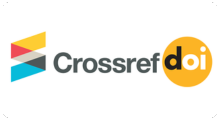Financial Literacy, Individual Characteristic and Financial Inclusion: A Study on Lecturers in Palembang
DOI:
https://doi.org/10.11594/ijmaber.03.02.12Keywords:
Financial Literacy, Demography factor, individual characteristic, gender, financial inclusionAbstract
This study aims to analyze the effect of financial literacy, gender, age, income, and education on financial inclusion. This research involves university lecturers in the city of Palembang. The snowball sampling technique was used in this study and a total of 153 questionnaire forms were returned and could be processed. Hypothesis testing using multiple linear regression and SPSS assistance. The results showed that financial literacy and income had a positive and significant effect on financial inclusion, while other variables, namely gender, age, and education had no significant effect on financial inclusion. The implication is that the government through the Financial Services Authority (OJK) still needs to educate university lecturers in Palembang, especially those with below-average income, with the hope that the financial literacy of lecturers in Palembang will increase and all lecturers, especially those with low incomes, so that they have sufficient knowledge. to take the decision to have a financial product from a formal financial institution.
Downloads
References
Abel, Sanderson, Learnmore Mutandwa, PLR (2018). A Review of Determinants of Financial Inclusion. In-ternational Journal of Economics and Financial, 8(3), 1–8.
Akileng, G., Lawino, GM, & Nzibonera1, & E. (2018). Evaluation of determinants of financial inclusion in Uganda. Journal of Applied Finance & Banking, 8(4), 47–66. https://www.scienpress.com/Upload/JAFB/Vol 8_4_4.pdf
Akudugu, Mamudu Abunga. (2013). The Determinants of Financial Inclusion in Western Africa: Insights from Ghana. Research Journal of Finance and Ac-counting, 4(8), 1–9. https://core.ac.uk/download/pdf/234629549.pdf
Allenab, Franklin, Original Demirguc-Kuntc, Leora Klap-perc, & MSMP (2016). The foundations of financial inclusion: Understanding ownership and use of formal accounts. Journal of Financial Intermedia-tion, 27(C), 1–30. https://doi.org/DOI:10.1016/j.jfi.2015.12.003
Yuni Noor Annisa, Sugeng Setyadi, SA (2019). Determi-nants of Financial Inclusion in Indonesia for the Period of 2012-2016. Tirtayasa EKONOMIKA, 14(1 (April)), 150–170. https://doi.org/http://dx.doi.org/10.35448/jte.v14i1.5425
ANZ. 2015. Survey of Adult financial literacy in Australia. Full report of the results from the 2014 ANZ survey. https://www.anz.com/resources/3/1/31cbc1fd-9491-4a22-91dc-4c803e4c34ab/adult-financial-literacy-survey-full-results.pdf
Aribawa, Dwitya. 2016. The Effect of Financial Literacy on the Performance and Sustainability of MSMEs in Central Java, Business Strategy, Vol. 20(1), p. 1-13.
Chithra, N., Selvam, M. (2013). Determinants of financial inclusion: An empirical study on the inter-state variations in India. https://doi.org/10.2139/ssrn.2296096
Definit, OJK, and USAID. 2013. Developing Indonesian Financial Literacy Index. Jakarta. USAID. https://www.google.com/search?q=Definit%2C+OJK%2Cdan+USAID.+2013.+Developing+Indonesian+Financial+Literacy+Index.+Jakarta.+USAID.&sxsrf=ALeKk02-nQf01ooHcOGYqQdPeN4w900UjA% 3A1628584782903 & ei = TjsSYd_ONuKH8QO-j5Eo & oq = Definite% 2C + FSA% 2Cdan + USAID. + 2013 + Developing + Indonesian + Financial + Literacy + Index. + Jakarta. + USAID. & gs_lcp = Cgdnd3Mtd2l6EANKBAhBGAFQAFgAYMCQAWgBcAB4AIABnwGIAZ8BkgEDMC4xmAEAwAEB & scli-ent = GWS-wiz & ved = 0ahUKEwjfreKLh6byAhXiQ3wKHb5HBAUQ4dUDCA0 & uact = 5
Fitriah & Wawan Ichwanudin. (2020). Factors Affecting Financial Inclusion (Study on Master of Manage-ment Students at Sultan Ageng Tirtayasa Universi-ty). Tirtayasa Journal of Business Research and Management (JRBMT), 4(2), 94–108. https://doi.org/http://dx.doi.org./10.48181/jrbmt.v4i2.10332
Hung, Angela. A, Andrew M. Parker, Joanne K. Young. 2009.Defining and Measuring Financial Literacy SSRN Electronic Journal. https://www.researchgate.net/publication/46464346_Defining_and_Measuring_Financial_Literacy
Huston, Sandra J. 2010. Measuring Financial Literacy. The Journal of Consumer Affairs, Vol 44 (2).
Indrawati, Yulia. 2015. Determinants and Strategies for Improving Financial Literacy for Urban Communities in Jember Regency. Executive Summary Research Lecturer Beginner, Jember University Research Institute.http://repository.unej.ac.id/handle/123456789/63430. Downloaded August 1, 2017
Mhlanga, David & Denhere, & V. (2020). Determinants Of Financial Inclusion In Southern Africa. Studia Uni-versitatis Babes Bolyai - Oeconomica, 65(3), 39–52. https://www.ceeol.com/search/article-detail?id=918791
Musa, A., Abdullahi, B., Idi, A., Tasiu, M. (2015). Drivers of financial inclusion and gender gap in Nigeria. The Empirical Econometrics and Quantitative Economics Letters, 4(4), 186–199. https://www.researchgate.net/publication/319098981_Drivers_of_Financial_Inclusion_and_Gender_Gap_in_Nigeria
Mutia Fauzia. (2019). Indonesia's Global Competitive-ness Index Drops To The World's 50. Kompas.Com. https://money.kompas.com/read/2019/10/10/051323226/index-daya-saing-global-indonesia-turun-menjadi-50-dunia
Nugroho, Ari & Evi Yulia Purwanti. (2018). Determinants of Financial Inclusion in Indonesia (Global Findex 2014). Journal of the Dynamics of Development Economics, 1(1), 1–13. https://doi.org/https://doi.org/10.14710/jdep.1.1.1-13
OECD INFE, 2012. Financial Literacy Assessment Framework.http://www.oecd.org/pisa/pisaproducts/46962580.pdf downloaded July 31, 2017
Financial Services Authority, O. (2019). Press Release OJK Survey 2019 Index of Financial Literacy and Inclusion Increases. https://www.ojk.go.id/id/berita-dan-activities/siaran-pers/Pages/Siaran-Pers-Survei-OJK-2019-Index-Literasi-Dan-Inclusion-Keuangan-Meningkat.aspx
Financial Services Authority, O. (2020). National Survey of Financial Literacy and Inclusion 2019. https://www.ojk.go.id/id/berita-dan-activities/publikasi/Pages/Survei-Nasional-Literasi-dan-Inclusion-Keuangan-2019.aspx
Oshora, Betgilu, Goshu Desalegn, Eva Gorgenyi-Hegyes, Maria Fekete-Farkas, & ZZ (2021). Determinants of Financial Inclusion in Small and Medium Enter-prises: Evidence from Ethiopia. Journal of Risk and Financial Management, 14(286), 1–19. https://doi.org/https://doi.org/10.3390/jrfm14070286
Sastiono, Prani & Chaikal Nuryakin. (2019). Financial Inclusion through Digital Financial Services Pro-gram and Laku Pandai Financial Inclusion: Case Study of LKD and Laku Pandai Program. JEPI, In-donesian Journal of Economics and Development, 19(2), 242–262. https://doi.org/https://doi.org/10.21002/jepi.v19i2.1228
Septiani, Risa Nadya & Eni Wuryani. (2020). The Effect of Financial Literacy and Financial Inclusion on the Performance of MSMEs in Sidoarjo. E-Journal of Management, 9(8), 3214–3236. https://doi.org/DOI: https://doi.org/10.24843/EJMUNUD.2020.v09.i08.p16
Siddik, NA, Sun, G., Shanmugan, J., Yanjuan, C. (2016). Impacts of e-banking on performance of banks in a developing economy: Empirical evidence from Bangladesh. Journal of Business Economics and Management, 17(6), 1066–1080. https://doi.org/10.3846/16111699.2015.1068219
Shofawati, Atina. (2019). The Role of Digital Finance to Strengthen Financial Inclusion and the Growth of SME in Indonesia. Working Pa-perhttps://doi.org/10.18502/kss.v3i13.4218. https://www.google.com/search?q=2nd+ICIEBP+The+2nd+International+Conference+on+Islamic+Econom-ics%2C+Business%2C+and+Philanthropy+%28ICIEBP%29+Theme%3A+“ Sustainabil-ity+and+Socio+Economic+Growth”+Volume+2019.+Conference+paper.+The+Role+of+Digital+Finance+to. Retrieved 15 July 2021.
Soumaré, I., Tchana, FT, Kengne, TM (2016). ), Analysis of the determinants of financial inclusion in Cen-tral and West Africa. Journal of Transnational Cor-porations Review, 8(4), 231–249. https://doi.org/https://doi.org/10.1080/19186444.2016.1265763
Taft, MK, Hosein, ZZ, & Mehrizi, SMT 2013. The relation between financial literacy, financial wellbeing and financial concerns. International Journal of Business and Management, Vol. 8 (11), pp. 63–75
The World Economic Forum. (2017). Insight Reports. The Global Competitiveness Report 2017–2018 (Professor Klaus Schwab (ed.)). The World Eco-nomic Forum. http://www3.weforum.org/docs/GCR2017-2018/05FullReport/TheGlobalCompetitivenessReport2017–2018.pdf
The World Economic Forum. (2019). Insight Reports. The Global Competitiveness Report 2019 (PK Schwab (ed.)). The World Economic Forum. http://www3.weforum.org/docs/WEF_TheGlobalCompetitivenessReport2019.pdf
Tuesta, D., Sorensen, G., Haring, A., Cámara, N. (2015). Financial Inclusion and its Determinants: The Case of Argentina. In BBVA Research Working Paper (Vol. 15, Issue 03).
Ummah, Bintan Badriatul, Nunung Nuryartono, and LA (2015). Analysis of Financial Inclusion and Income Equity in Indonesia. Journal of Economics and De-velopment Policy, 4(1), 1–27. https://doi.org/https://doi.org/10.29244/jekp.v4i1.19919
Uddin, AA, Chowdhury, MAF, Islam, N. (2017). Determi-nants of financial inclusion in Bangladesh: Dynam-ic GMM and quantile regression approach. Journal of Developing Areas, 51(2), 221–237. https://doi.org/10.1353/jda.2017.0041
Vaid, Yashwant Kumar, VS & MS (2020). Determinants of Successful Financial Inclusion in Low-Income Ru-ral Population. The Indian Economic Journal, 68(1), 82–100. https://doi.org/10.1177/0019466220962057
Wardhono, Adhitya, Ciplis G. QORI'AH, & YI (2016). The determinants of financial inclusion: Evidence from Indonesian districts. International Journal of Eco-nomic Perspectives, 10(4), 472–483. https://www.researchgate.net/publication/319304832_The_determinants_of_financial_inclusion_Evidence_from_Indonesian_districts
World Bank. (2019). The little data book on financial inclusions 2018.http://openknowledge.worldbank.org/handle/10986/29654. Retrieved 15 July 2021.
Zins, A., Weill, L. (2016). The determinants of financial inclusion in Africa. Review of Development Fi-nance, 6(1), 46–57.
Downloads
Published
Issue
Section
License
Authors who publish with this journal agree to the following terms:
Authors retain copyright and grant the journal right of first publication with the work simultaneously licensed under a Creative Commons Attribution License that allows others to share the work with an acknowledgement of the work's authorship and initial publication in this journal.
Authors are able to enter into separate, additional contractual arrangements for the non-exclusive distribution of the journal's published version of the work (e.g., post it to an institutional repository or publish it in a book), with an acknowledgement of its initial publication in this journal.
Authors are permitted and encouraged to post their work online (e.g., in institutional repositories or on their website) prior to and during the submission process, as it can lead to productive exchanges, as well as earlier and greater citation of published work (See the Effect of Open Access).



















